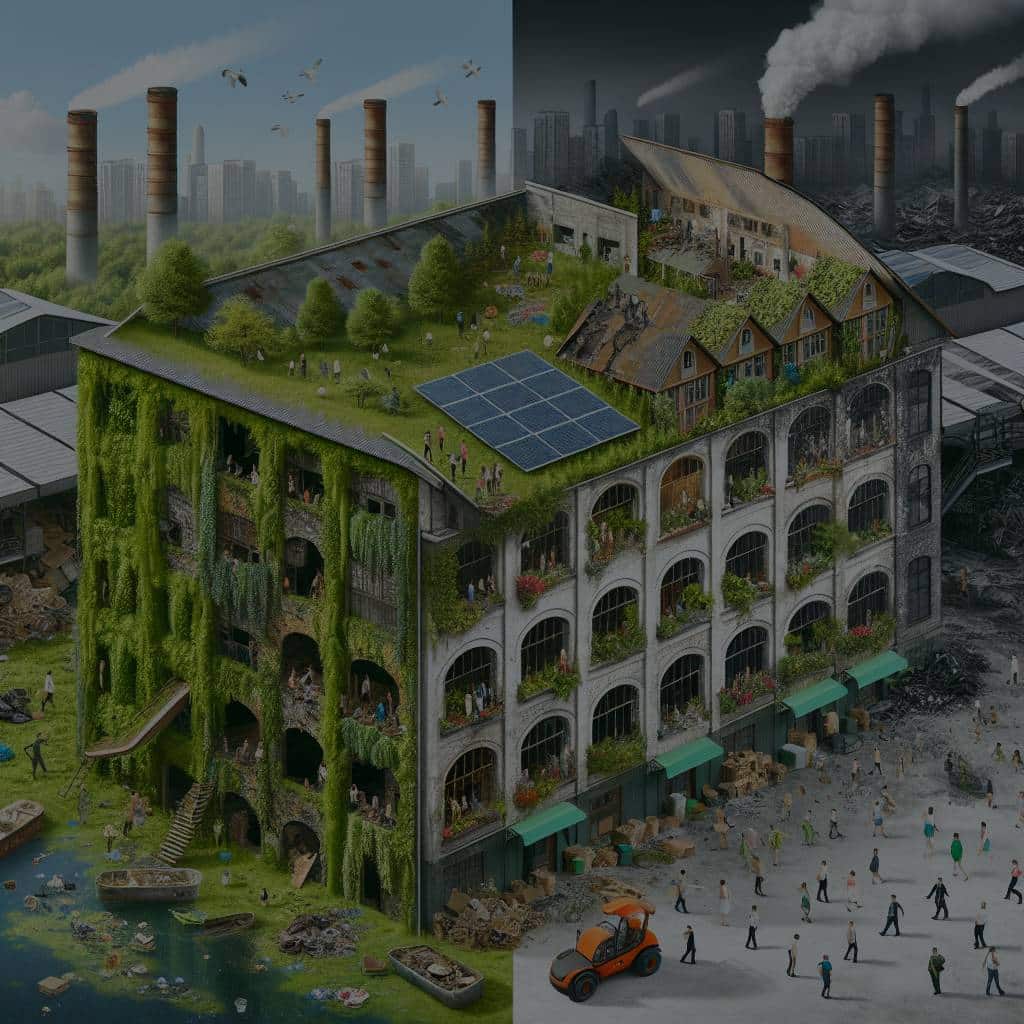What Are the Environmental Benefits of Adaptive Reuse in Real Estate Development?

In the fast-moving world of real estate and construction, one trend that has been gaining significant traction is adaptive reuse. This approach, which involves repurposing existing structures for new uses, offers a myriad of benefits to both the environment and the community. Instead of tearing down old buildings and constructing new ones, adaptive reuse allows developers to retain the unique character of the existing building while modernizing it for contemporary use. This article will explore the environmental benefits that adaptive reuse offers in the field of real estate development.
The Role of Adaptive Reuse in Sustainable Development
Adaptive reuse plays a crucial role in sustainable development. It’s a strategy that seeks to minimize the negative impacts of construction projects on the environment by reusing and repurposing existing structures. This practice can significantly reduce the demand for new materials and energy for construction, leading to a decrease in greenhouse gas emissions.
A lire en complément : How to Assess the Suitability of a Property for Airbnb or Short-Term Rentals?
Adaptive reuse is highly effective in the preservation and enhancement of buildings with historic or architectural significance. Not only does it extend the building’s life cycle, but it also contributes to the visual continuity and the cultural identity of the community. The office buildings that once stood as a symbol of economic power can be transformed into residential spaces, preserving the architectural charm while catering to modern needs.
Environmental Advantages of Adaptive Reuse
The environmental benefits of adaptive reuse are expansive, ranging from the conservation of materials to the reduction of construction waste. Firstly, it significantly decreases the demand for new materials. With the reuse of existing structures, fewer raw materials are needed, reducing the strain on natural resources. This is a clear advantage over the conventional ‘demolish and build’ approach, which often results in a high demand for new materials, leading to increased mining and logging activities.
A découvrir également : What Are the Financial Benefits of Investing in Student Accommodation in University Towns?
Adaptive reuse also contributes to waste reduction. Construction and demolition waste make up a significant proportion of the total solid waste generated globally. By opting for adaptive reuse, we can drastically reduce the volume of this waste.
Moreover, adaptive reuse can lead to reduced energy consumption. Constructing a new building from scratch requires a significant amount of energy. In contrast, repurposing an existing building usually requires less energy, especially when energy-efficient upgrades are incorporated into the redesign.
Adaptive Reuse in Commercial Real Estate
Commercial real estate has been particularly receptive to the concept of adaptive reuse. The repurposing of commercial properties such as office spaces, warehouses, and factories into residential units or retail spaces is becoming increasingly common, especially in densely populated urban areas.
There are numerous examples where commercial properties have been successfully repurposed. Former factories transformed into loft apartments or old office buildings converted into hotels are common sights in many cities. These projects not only add character to the urban landscape but also contribute to the revival of the local community and economy. And of course, they bring with them the environmental benefits associated with adaptive reuse.
Community and Economic Benefits of Adaptive Reuse
Beyond the environmental benefits, adaptive reuse also yields significant community and economic benefits. It can play a pivotal role in community revitalization, especially in urban areas with abandoned or underutilized buildings.
Adaptive reuse can breathe new life into these structures, transforming them into vibrant spaces for living, working, or entertainment. This process can stimulate community development and economic growth, as these renewed structures often attract new businesses, tourists, and residents, improving the local economy.
Furthermore, adaptive reuse projects can also contribute to job creation during the construction phase and beyond. These projects often require a specialized set of skills, leading to the creation of jobs in various sectors, including construction, architecture, and interior design. Once completed, these repurposed buildings can provide further employment opportunities in the various business establishments they house.
In summary, adaptive reuse is a powerful tool in sustainable real estate development, offering myriad environmental benefits, from resource conservation to waste reduction and energy efficiency. While the practice is not without its challenges, its potential for contributing to sustainable development, community revitalization, and economic growth is immense. As sustainability becomes a critical aspect in development, the adaptive reuse of existing buildings will undoubtedly continue to gain prominence in the real estate landscape.
Adaptive Reuse in Historic Preservation
Historic preservation is yet another area where the concept of adaptive reuse shines. Renovating and repurposing existing structures of historic or architectural significance not only helps in preserving our heritage but also provides a unique character to the building that is often appreciated by the community.
Historic buildings often possess a distinct architectural style that reflects the period they were constructed in. By carrying out adaptive reuse projects, real estate developers can maintain these unique architectural features while ensuring that the building serves a functional purpose in the present day. It’s a creative way of merging the old with the new – preserving the past while embracing the future.
Adaptive reuse in historic preservation also demonstrates respect for the embodied energy that these structures contain. Embodied energy refers to the total amount of energy consumed by all of the processes associated with the production of a building, from the mining and processing of natural resources to manufacturing, transport, and installation. By repurposing these buildings, we can continue to capitalize on this embodied energy, reducing the overall environmental impact.
Furthermore, these projects can also spark interest in local history and inspire community pride. A successfully executed adaptive reuse project can turn a historic building into a local landmark, attracting tourists and boosting the local economy.
Conclusion: The Future of Adaptive Reuse in Real Estate Development
In conclusion, adaptive reuse is not just a trend in real estate development but a sustainable approach that promises immense benefits for the environment, the community, and the economy. It is an effective solution to the environmental challenges posed by the conventional ‘demolish and build’ approach, ranging from resource conservation, waste reduction to energy efficiency and reduction of the overall environmental impact.
Beyond the environmental aspect, adaptive reuse contributes to community revitalization, historic preservation, and economic growth. By transforming underutilized or abandoned buildings into functional and vibrant spaces, adaptive reuse can stimulate community development, attract new businesses, and create job opportunities.
However, it’s worth noting that the success of adaptive reuse projects requires careful planning and execution. It involves a delicate balance between preserving the character and value of the existing buildings while ensuring their suitability for contemporary use.
As we move forward, the importance of adaptive reuse in real estate development is likely to increase. With growing awareness about the need for sustainable development and the demand for unique, character-filled spaces, the future of adaptive reuse in real estate looks promising. As a society, embracing adaptive reuse could be a significant step towards a more sustainable and vibrant urban landscape.
